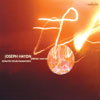Haydn Piano Sonatas
The notes are there; Haydn’s poetry, unfortunately, is not
View record and artist detailsRecord and Artist Details
Composer or Director: Joseph Haydn
Genre:
Instrumental
Label: Ambroisie
Magazine Review Date: 2/2006
Media Format: CD or Download
Media Runtime: 79
Mastering:
Stereo
DDD
Catalogue Number: AMB9975

Tracks:
| Composition | Artist Credit |
|---|---|
| Sonata for Keyboard No. 32 |
Joseph Haydn, Composer
Jérôme Hantaï, Fortepiano Joseph Haydn, Composer |
| Sonata for Keyboard No. 11 (Parthia) |
Joseph Haydn, Composer
Jérôme Hantaï, Fortepiano Joseph Haydn, Composer |
| Sonata for Keyboard No. 40 |
Joseph Haydn, Composer
Jérôme Hantaï, Fortepiano Joseph Haydn, Composer |
| Sonata for Keyboard No. 31 |
Joseph Haydn, Composer
Jérôme Hantaï, Fortepiano Joseph Haydn, Composer |
| Sonata for Keyboard No. 20 |
Joseph Haydn, Composer
Jérôme Hantaï, Fortepiano Joseph Haydn, Composer |
| Sonata for Keyboard No. 43 |
Joseph Haydn, Composer
Jérôme Hantaï, Fortepiano Joseph Haydn, Composer |
Author: Nalen Anthoni
Miklós Dolinszky (Könemann Music, Budapest) doubts if No 11 is by Haydn; Georg Feder (New Grove) thinks it probably is, while in the booklet-notes Jérôme Hantaï and Marc Vignal are certain of its authenticity. However, Vignal accepts that many early sonatas are suspect. Although he says that there are only two numbering systems, Hoboken and Christa Landon (whose chronology is paralleled here), while a third – by Feder – is also extant.
Hantaï uses an original 1788 Taskin fortepiano and hopes that ‘its unique timbre and very distinctive poetic quality will make up for the occasional noises from the action and the imperfections of dampers’. Unfortunately, these shortcomings are emphasised by a microphone that appears to be right beside the lid and a recorded level that is too high. But how could Hantaï claim the instrument to have a ‘very distinctive poetic quality’ of its own? Surely he is meant to extract the poetic quality inherent in the music through what is only a mechanical medium; and this he fails to do.
Haydn’s poetry runs a gamut of moods that Hantaï doesn’t analyse. His playing is mostly a bald execution of the notes (probably exacerbated by the confined acoustic), with the omission of dynamics and marks of expression in the text often taken at face value. Any attempted variation in the intensity of sound emerges as either a step up or down with no grading in between. The use of dulcimer tone in the Largo of No 11 only offers a subdued version of the same thing. Hantaï shows some temperament in the Adagio of No 31 but despite the moderator (muffler pedal), he doesn’t approach Emanuel Ax for range of expression; nor does he bother with the ‘interior’ of No 32 that András Schiff scrutinises so searchingly. Try before you buy.
Hantaï uses an original 1788 Taskin fortepiano and hopes that ‘its unique timbre and very distinctive poetic quality will make up for the occasional noises from the action and the imperfections of dampers’. Unfortunately, these shortcomings are emphasised by a microphone that appears to be right beside the lid and a recorded level that is too high. But how could Hantaï claim the instrument to have a ‘very distinctive poetic quality’ of its own? Surely he is meant to extract the poetic quality inherent in the music through what is only a mechanical medium; and this he fails to do.
Haydn’s poetry runs a gamut of moods that Hantaï doesn’t analyse. His playing is mostly a bald execution of the notes (probably exacerbated by the confined acoustic), with the omission of dynamics and marks of expression in the text often taken at face value. Any attempted variation in the intensity of sound emerges as either a step up or down with no grading in between. The use of dulcimer tone in the Largo of No 11 only offers a subdued version of the same thing. Hantaï shows some temperament in the Adagio of No 31 but despite the moderator (muffler pedal), he doesn’t approach Emanuel Ax for range of expression; nor does he bother with the ‘interior’ of No 32 that András Schiff scrutinises so searchingly. Try before you buy.
Discover the world's largest classical music catalogue with Presto Music.

Gramophone Digital Club
- Digital Edition
- Digital Archive
- Reviews Database
- Full website access
From £8.75 / month
Subscribe
Gramophone Full Club
- Print Edition
- Digital Edition
- Digital Archive
- Reviews Database
- Full website access
From £11.00 / month
Subscribe
If you are a library, university or other organisation that would be interested in an institutional subscription to Gramophone please click here for further information.





